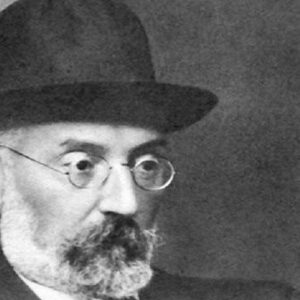Miguel de Unamuno was a Spanish educator, philosopher, and author who is best known for his work “Abel Sánchez: The History of a Passion,” which is a modern retelling of the Cain and Abel tragedy. He was a modernist who wrote in all major genres, including essay, novel, poetry, and theater, and was instrumental in blurring the lines between them. He grew up to be a creative and independent young man as the son of Basque parents. He was nurtured mostly by his mother and grandmother, who instilled in him a profound passion for the Catholic religion when he lost his father at an early age. He was so committed to his beliefs that he considered becoming a priest. Life, on the other hand, had other plans for him, and he eventually went into teaching. He was also a prolific writer who contributed significantly to Spain’s intellectual life. He also served as rector of the University of Salamanca twice, but was forced to resign due to his opposition to General Miguel Primo de Rivera’s dictatorship in Spain. He was an outspoken man who got himself into problems again when he spoke out against General Francisco Franco’s Falangists, which led to him being thrown under house arrest.
Childhood and Adolescence
Miguel de Unamuno y Jugo was born in Bilbao, Biscay, Spain, on September 29, 1864, to Félix de Unamuno and Salomé Jugo. His parents had Basque ancestors.
Miguel was raised by his mother and grandmother when his father died when he was six years old. He grew up to be a young man with a strong Catholic faith under their supervision. He wished to become a priest.
In 1880, Unamuno enrolled in the University of Madrid. There, he became more interested in intellectual pursuits than religious ones. He devoured philosophy, psychology, and history literature, and by the age of 20, he had mastered 11 languages.
He may have known the “Generation of 1898,” a literary group of Spanish intellectuals and philosophers dedicated to the country’s regeneration.
Miguel Unamuno’s Career
In 1890, Miguel de Unamuno returned to Bilbao and began working as a tutor and essayist. He eventually became a professor of Greek. He wanted to be a philosophy professor, but he couldn’t secure an academic position because philosophy in Spain was rather politicized.
In 1895, he released his first book, En torno al Casticismo (Around Reason), a collection of articles in which he critically assessed Spain’s isolated and anachronistic position in Western Europe. The battle to maintain one’s own integrity in the face of social conformity, extremism, and hypocrisy was a recurring theme in his works.
He was named rector of the University of Salamanca in 1900 and held the position for several years. Over the next few years, he published a number of books, including ‘Amor y pedagogia’ (1902), ‘El espejo de la muerte’ (1913), ‘Niebla’ (Mist) (1914), ‘Vida de Don Quijote y Sancho’ (1914), ‘Abel Sánchez’ (1917), ‘Tulio Montalbán’ (1920), ‘Tres novela (1921).
General Miguel Primo de Rivera, a dictator in Spain, deposed the parliamentary government in 1924. Unamuno, who was vocal and independent, released a series of pieces criticizing Rivera.
Miguel de Unamuno was dismissed from his position as rector and exiled to Fuerteventura, one of the Canary Islands, by Rivera. Unamuno then fled to France and set up shop in Hendaye, a border town in the French Basque Country. His objective was to stay in France and get as close to Spain as possible.
Following the overthrow of General Miguel Primo de Rivera’s dictatorship in 1930, Unamuno returned to Spain and resumed his position as rector of the University of Salamanca. It was a moment of great political turmoil in Spain, and after the dictator’s fall, the country began its Second Republic. Unamuno ran for the Agrupación al Servicio de la Repblica, a minor intellectual party. He was a moderate who opposed all forms of political and religious radicalism.
Unamuno initially supported General Francisco Franco’s Falangist insurrection against Spanish monarchy in the 1930s. However, as the movement grew more violent, he began to reject it. Unamuno was fired from his job as rector after publicly denouncing Franco in 1936.
His Major Projects
‘Abel Sánchez: The History of a Passion,’ his novel, is a modern-day retelling of the Cain and Abel tale. The work tackles issues of envy between two men, one named Abel, a well-known painter, and the other, Joaquin, a well-known doctor.
San Manuel Bueno, mártir, a novella about the life of a parish priest in a small Spanish community, is another of his well-known works. The book is said to have consolidated practically all of Unamuno’s ideas and is distinguished by action and description minimalism.
Personal History and Legacy
In 1891, Miguel de Unamuno married Concepción Lizárraga, his childhood sweetheart. The couple had eleven children together.
He was initially sentenced to death after Franco withdrew him from his job as rector of the University of Salamanca. However, the order was modified to place him under home arrest. On December 31, 1936, he died of a heart attack.
Estimated Net worth
Miguel is one of the wealthiest poets and one of the most well-known. Miguel de Unamuno’s net worth is estimated to be $1.5 million, according to Wikipedia, Forbes, and Business Insider.


